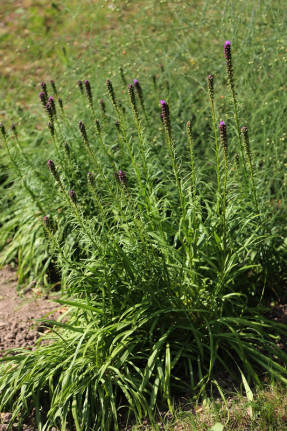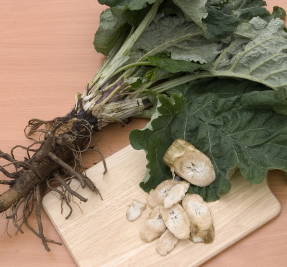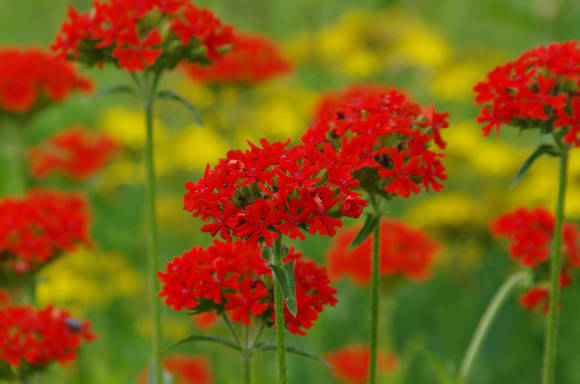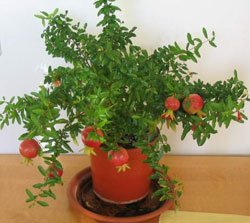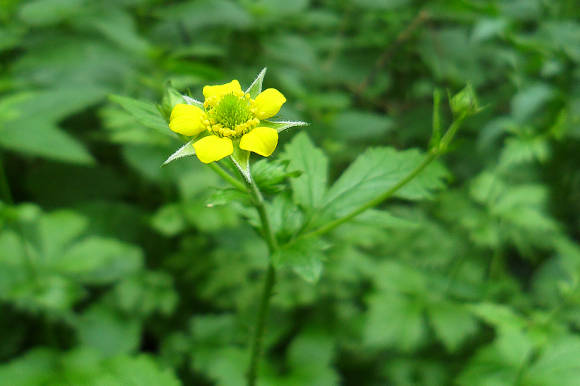Rhizome begonias (Rhizomatous Begonias), or as they are often called, rhizomes are one of the largest groups of begonias. This includes species and varieties that have stems modified into growing on the surface of the soil or underground rhizomes. There are varieties with partially erect stems. Rhizome begonias are grown mainly for interesting leaves in various shades of green, black, silver or purple, often with intricate patterns. The shape of the leaves is also varied, round or stellate, with spirals in the center of the leaf, a fringed or hairy edge. In texture, the leaves can be smooth, shiny or rough, covered with hairs.
With the beauty of the leaves, some varieties are close to royal begonias (Rex-group). But only because there is no royal begonia in their pedigree (Begonia rex), they are classified as rhizome.
In addition to decorative foliage, many varieties also have bright, impressive flowering. Most species bloom in spring, they need a period of short days to set flower buds, others bloom all year round, and then large inflorescences can completely cover the leaves. The flowers are most often white, pink or red, some varieties are yellow.
Among rhizome begonias, miniature begonias are not uncommon, but there are also quite large ones. Many varieties are shade-tolerant and are quite content with a not very bright location. Some of them are quite unpretentious, in warm climates they can be grown outdoors, others are so capricious that they grow only in florariums.
The variety of species and varieties is so great that it will satisfy every taste. Here are some common types and varieties of rhizome begonias:

Begonia Mason(Vegoniamasoniana) was brought by L. Maurice Mason to England in 1952 from Singapore. Its homeland is China or India. The plant is about 45 cm tall with heart-shaped leaves. The leaf surface is hard and wrinkled, covered with pimples with red bristles growing from them. The edges of the leaf are serrated and hairy. On the light green background of the leaf there is a characteristic brown pattern along the veins in the form of a cross, which gave the name to the plant - begonia Iron Cross.
Red-leaved begonia, or Fista(Vegoniax erythrophylla, syn. V.feastii) does not occur in nature. This is one of the earliest hybrids, obtained in 1845 in Germany from crossing Begonia manicata X B. hydrocotylifolia... It is a rhizome begonia about 30 cm tall, with dark green glossy rounded thyroid leaves up to 6-7.5 cm, covered with white hairs along the edges, red on the underside. The petioles are red and covered with hairs. Pink flowers on long peduncles appear in late winter - early spring. The variety is easy to maintain. On the basis of this begonia, decorative varieties were bred, such as:
- Begonia Buncha (Begonia xerythrophylla Bunchii) - with small rounded green or burgundy leaves. The edges of the leaves are strongly fringed, which gives the variety a special appeal. Small pink flowers in loose racemes on long peduncles appear in spring.
- Begonia Helix (Begonia xerythrophylla Helix) - is distinguished by smooth, shiny leaves of chocolate-black color. The base is twisted into a "snail". The reverse side of the leaf is red.

Begonia Bauer (Begonia bowerae) originally from Mexico. It is a small plant about 25 cm tall with a creeping stem. The leaves are medium-sized, heart-shaped, emerald green with black, purple-burgundy or brown spots along the edges. The edges of the leaves and petioles are covered with hard hairs. The flowers are light pink, collected in loose drooping inflorescences. The original species is rarely found in collections, but it served as the basis for the development of many varieties:
- Begonia Tiger (Begonia bowerae Tiger) is a miniature variety reaching a height of 10 cm.The stem is creeping, branching. Numerous small, up to 2.5-4 cm, velvety oblique-heart-shaped leaves are covered with a tiger pattern: wide brown stripes run along the veins on a green background. The leaves are covered with small villi along the edge.The leaf petioles are also spotted.
- Begonia Cleopatra (Begonia bowerae Cleopatra) is a plant up to 20-30 cm tall, with creeping, ascending branching stems. Leaves up to 7-10 cm, palmate-lobed, reminiscent of maple, wavy, with an uneven edge, covered with numerous villi. Depending on the lighting, the upper side of the leaf is dark olive or bright green in color with chocolate spots along the edges, the lower side is lighter, with burgundy spots. It blooms from late winter to June with white or pink flowers, collected in a brush.
- Begonia Black Velvet (Begonia bowerae Black Velvet) resembles the Cleopatra begonia in habit, but the leaves are velvety black, with a small green star in the middle.
 |  |
Begonia hogweed (Begonia heracleifolia) - originally from Mexico, was first described in 1830. Often found under the name Star Begonia. It is a herbaceous plant with a height of 40-50 cm with a thick creeping stem. Leaves up to 25 cm, finger-dissected, hairy, coarsely toothed at the edges, dark green above, with lighter stripes along the veins, reddish below. Leaf petioles up to 30 cm long are covered with soft dense hairs with a bunch of narrow fringed scales at the top. This begonia has many varieties, gave rise to many new varieties and is one of the parents of the castor-leaved begonia.
Tick-borne begonia (Begonia x ricinifolia) - one of the oldest hybrids, obtained from crossing the hogweed begonia with peponoliferous begonia (Begonia heracleifoliaxB. peponifolia).

Powerful plant 1-1.5 m high with a creeping stem covered with white pubescence. The leaves are large, up to 35 cm in diameter, asymmetric, with large teeth along the edge, on long petioles. The color of the leaves is from bronze-green to copper-brown above and reddish below. The leaf is covered with brownish villi. The flowering of this variety is quite decorative: small white or pinkish flowers are collected at the top of a long, up to 1 m, peduncle. Flowering can last from spring to autumn.
Begonia Griffith(Begonia griffithiana) - originally from the Himalayas. It is a small herb up to 40-50 cm high, with a thick rhizome. Leaves are ovate, pointed, oblique at the base, with large teeth along the edge, pubescent on both sides with violet-red hairs. The center of the leaf and the strip along the edge are olive green, the rest is bright silver.
Goeg begonia (Begonia goegoensis) - rhizomatous begonia with characteristic ovoid leaves, without notch at the petiole. The leaves are silky, dark green, with a beautiful pattern in the form of a web of light veins on the upper side. The underside of the leaf is reddish, with sparse hairs. Petioles of leaves are faceted, square in cross-section. The flowers are small, pink.
Begonia salt mutata(Begonia soli-mutata) - a low species from Brazil with a thickened underground rhizome and fleshy creeping shoots. The leaves are petiolar, reniform in outline, brownish-dark green, with a light green pattern radiating from the center along the veins, covered with small pimples and velvety to the touch, along the edge with a red edge. It blooms with tiny white flowers.

Imperial begonia(Begonia imperialis) native to the humid forests of Mexico. Rhizome begonia with ovoid, rough pubescent leaves, serrated at the edges, about 12 cm long. The upper side of the leaf is bright green with a pattern of olive-silvery spots along the main veins. Many varieties have been developed that differ in the color of the upper side of the leaves, from monochromatic to very contrasting striped or speckled.
Begonia hatakoa (Begonia hatacoa) - syn. red-hearted begonia(Begonia rubro-venia) - native to the shady rainforests of East India. Plants with a thick creeping rhizome and thin short shoots. The leaves are whole, oval, elongatedly pointed, 10-20 cm long and 3-8 cm wide, finely toothed along the edge, dark green above, with white spots, covered with hairs, pink-purple below. Petiole 8-20 cm long, covered with purple hairs.The flowers are whitish; the petals are covered with reddish strokes on the outside.

Begonia royal(Begonia rex) was discovered in India, in the state of Assam, and introduced into culture in the middle of the 19th century. The leaves emerging from the creeping rhizome have a magnificent brown-silver pattern. Today, numerous spectacular hybrid varieties obtained by crossing royal begonias with other species and varieties of begonias also appear under this name. Not all of them are rhizome, but they are similar in growing conditions.
More about this group - in the article Royal begonias, or Rex begonias.
About growing rhizome begonias - in the article Features of growing rhizome begonias.


